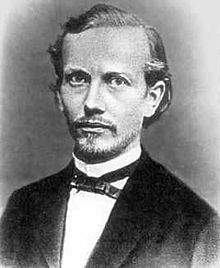92) 康洪元:讀數學有體會,樂在其中。Hermann Weyl (1885~1955)和 Hermann Hankel ( 1839~1873) 引文
https://www.facebook.com/hanching.chung/videos/376465461135884
數學系的康洪元老師/是該系老資格。
引進美國高中新數學SMSG(School Mathematics Study Group)教材計畫成員,由李新民教授主持,羅芳祥、康洪元、徐道寧教授擔任翻譯,合編高中《新數學》(New Math)教科書,成為國定版高中數學教科書。
#數學通識
我在中央大學中文系有一位「情同姊弟的師長級朋友」康來新教授。 她的尊翁康洪元教授是數學界前輩(他本身也是中央大學的校友), 曾任教於台師大和東海大學數學系。 康老師提到,她從父親那裡學到關於數學的唯一一件事,就是:
數學沒有標準答案
這真是個了不起的教育。 康老教授用來教育少女時代的康教授的例子,我稱之為「康氏家學」,是問:
將一張正方形色紙剪掉一角,還剩幾個角?
此大段是他的勉勵語/心得。
'mathematizing' may well be a creative activity of man
'Mathematizing' may well be a creative activity of man, like music, the products of which not only in form but also in substance are conditioned by the decisions of history and therefore defy complete objective rationalization.”
Hermann Weyl
The question for the ultimate foundations and the ultimate meaning of mathematics remains open; we do not know in which direction it will find its final solution nor even whether a final objective answer can be expected at all. "Mathematizing" may well be a creative activity of man, like language or music, of primary originality, whose historical decisions defy complete objective rationalization.
數學的終極基礎和終極意義的問題仍然懸而未決; 我們不知道它會在哪個方向找到它的最終解決方案,更不知道是否可以期待最終的客觀答案。 “數學化”很可能是人類的創造性活動,就像語言或音樂一樣,具有原始的獨創性,其歷史決定無視完全的客觀合理化。
赫爾曼·魏爾最愛
赫爾曼·外爾 (2013)。 “無限的層次:數學和哲學文選”,第 88 頁,Courier Corporation
Hermann Weyl | |
|---|---|
 |
Hermann Klaus Hugo Weyl, ForMemRS[2] (German: [vaɪl]; 9 November 1885 – 8 December 1955) was a German mathematician, theoretical physicist and philosopher. Although much of his working life was spent in Zürich, Switzerland, and then Princeton, New Jersey, he is associated with the University of Göttingen tradition of mathematics, represented by David Hilbert and Hermann Minkowski.
His research has had major significance for theoretical physics as well as purely mathematical disciplines including number theory. He was one of the most influential mathematicians of the twentieth century, and an important member of the Institute for Advanced Study during its early years.[5][6][7]
Weyl contributed to an exceptionally[8] wide range of fields, including works on space, time, matter, philosophy, logic, symmetry and the history of mathematics. He was one of the first to conceive of combining general relativity with the laws of electromagnetism. Freeman Dyson wrote that Weyl alone bore comparison with the "last great universal mathematicians of the nineteenth century", Poincaré and Hilbert.[8]Michael Atiyah, in particular, has commented that whenever he examined a mathematical topic, he found that Weyl had preceded him.[9]
Bibliography[edit]
- 1911. Über die asymptotische Verteilung der Eigenwerte, Nachrichten der Königlichen Gesellschaft der Wissenschaften zu Göttingen, 110–117 (1911).
- 1913. Die Idee der Riemannschen Flāche,[36] 2d 1955. The Concept of a Riemann Surface. Addison–Wesley.
- 1918. Das Kontinuum, trans. 1987 The Continuum : A Critical Examination of the Foundation of Analysis. ISBN 0-486-67982-9
- 1918. Raum, Zeit, Materie. 5 edns. to 1922 ed. with notes by Jūrgen Ehlers, 1980. trans. 4th edn. Henry Brose, 1922 Space Time Matter, Methuen, rept. 1952 Dover. ISBN 0-486-60267-2.
- 1923. Mathematische Analyse des Raumproblems.
- 1924. Was ist Materie?
- 1925. (publ. 1988 ed. K. Chandrasekharan) Riemann's Geometrische Idee.
- 1927. Philosophie der Mathematik und Naturwissenschaft, 2d edn. 1949. Philosophy of Mathematics and Natural Science, Princeton 0689702078. With new introduction by Frank Wilczek, Princeton University Press, 2009, ISBN 978-0-691-14120-6.
- 1928. Gruppentheorie und Quantenmechanik. transl. by H. P. Robertson, The Theory of Groups and Quantum Mechanics, 1931, rept. 1950 Dover. ISBN 0-486-60269-9
- 1929. "Elektron und Gravitation I", Zeitschrift Physik, 56, pp 330–352. – introduction of the vierbein into GR
- 1933. The Open World Yale, rept. 1989 Oxbow Press ISBN 0-918024-70-6
- 1934. Mind and Nature U. of Pennsylvania Press.
- 1934. "On generalized Riemann matrices," Ann. Math. 35: 400–415.
- 1935. Elementary Theory of Invariants.
- 1935. The structure and representation of continuous groups: Lectures at Princeton university during 1933–34.
- Weyl, Hermann (1939), The Classical Groups. Their Invariants and Representations, Princeton University Press, ISBN 978-0-691-05756-9, MR 0000255[37]
- Weyl, Hermann (1939b), "Invariants", Duke Mathematical Journal, 5 (3): 489–502, doi:10.1215/S0012-7094-39-00540-5, ISSN 0012-7094, MR 0000030
- 1940. Algebraic Theory of Numbers rept. 1998 Princeton U. Press. ISBN 0-691-05917-9
- Weyl, Hermann (1950), "Ramifications, old and new, of the eigenvalue problem", Bull. Amer. Math. Soc., 56 (2): 115–139, doi:10.1090/S0002-9904-1950-09369-0 (text of 1948 Josiah Wilard Gibbs Lecture)
- 1952. Symmetry. Princeton University Press. ISBN 0-691-02374-3
- 1968. in K. Chandrasekharan ed, Gesammelte Abhandlungen. Vol IV. Springer.
****
在大多數科學中,一代人拆毀了另一代人建立的東西,一代人已經建立的東西,另一代人破壞了。 僅在數學方面,每一代人都在舊結構上增加了一層新的層次。
赫爾曼·漢克爾的語錄
Hermann Hankel (14 February 1839 – 29 August 1873) was a German mathematician. Having worked on mathematical analysis during his career, he is best known for introducing the Hankel transform and the Hankel matrix.
Hermann Hankel | |
|---|---|
 | |
| Born | 14 February 1839 |
| Died | 29 August 1873 (aged 34) |
| Nationality | German |
| Alma mater | Leipzig University |
| Known for | |
| Spouse(s) | Marie Hankel |
| Scientific career | |
| Fields | |
| Institutions |
|
| Thesis | Ueber eine besondere Classe der symmetrischen Determinanten (1861) |

沒有留言:
張貼留言